|
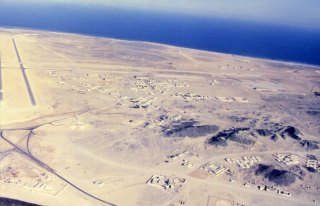
The King Faisal Naval Airbase on Masirah Island in Oman was our base
of operations for maritime patrol duties in North Arabian Sea Ops Area,
with VP-4 supplying the nucealus aircraft. We routinely deployed
pairs of P-3s to Masirah from our deployed squadrons at Diego Garcia
in the Indian Ocean. The nearest pizza was at Al-Fujayrah, a major
anchorage about 400 miles up the coast. Masirah-det aircraft always
smelled like pizzarias!
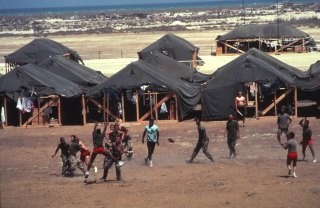
American troops playing sandlot football by their tents on the island
of Masirah, Oman during Operation Desert Shield in 1990-91. P-3s
routinely deployed to Masirah for a week at a time prior to the first
Gulf War. During Desert Shield/Storm the island’s modest
base became home to thousands of sailors and airmen.
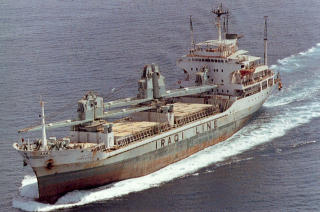
As soon as President Bush and the United Nations announced a maritime
blockade of Iraq, we were charged with locating 21 Iraqi Tank Lines
and Iraqi Lines merchant ships, as well as any naval craft or vessels
suspected of smuggling. This shows one of the smaller bulk cargo
freighters that we intercepted early on, before they began painting
out the identifying words on their hulls.
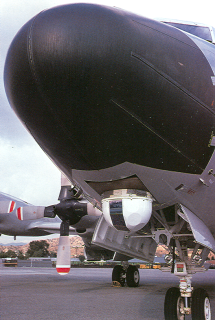
In the late
1980s, new P-3C Update III's were equipped with AAS-36 Infrared Detection
Sets (IRDS), similar to those carried on A-6 Intruders. This gave
us increased nighttime patrol capability for rigging surface ships as
well as other things.
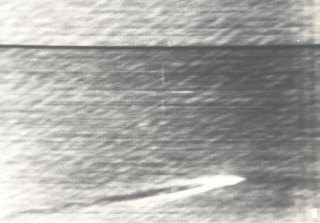
This view shows a periscope imaged on the IRDS.
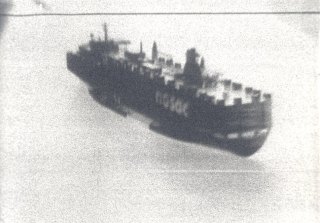
This is an IRDS image of a container ship made in the dead of night
in the Persian Gulf. The IRDS was an invaluable tool for rigging
all kinds of ships. It could even see through paint...
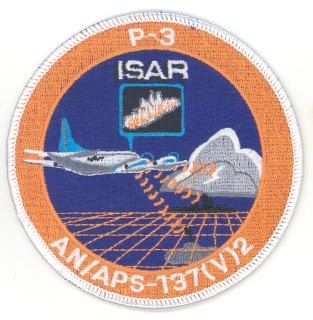
Shortly before Desert Storm, The Navy began configuring selected P-3C
Update IIIs with AN/APS-137 Inverse Synthetic Aperture Radar, called“ISAR”.
ISAR provides range, bearing, and positional data on anything that is
moving, on land or sea. It provided a valuable over-the-horizon
monitoring capability that proved itself invaluable during Operation
Desert Storm, going by the code name Outlaw Hunter.
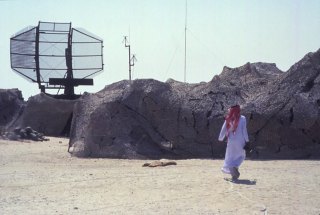
Desert Shield/Desert Storm provided new insights on many things, especially
an admiration for many of our Middle Eastern allies. This view shows
a mobile radar facility in Saudi Arabia, covered with desert camouflage
netting. It seemed as though this netting covered anything worth more
than $500.
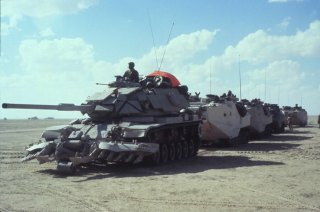
Marine M-60 tank equipped with reactive armor and a mine clearing blade
system, leading a line of AAVP7A1 Amtracs.
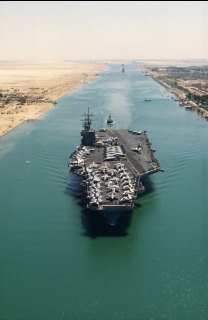
USS Theodore Roosevelt transiting the Suez Canal on its way to the Persian
Gulf in mid-January 1991.
Questions
or comments on this page?
E-mail Dr. J David Rogers at rogersda@mst.edu.

|